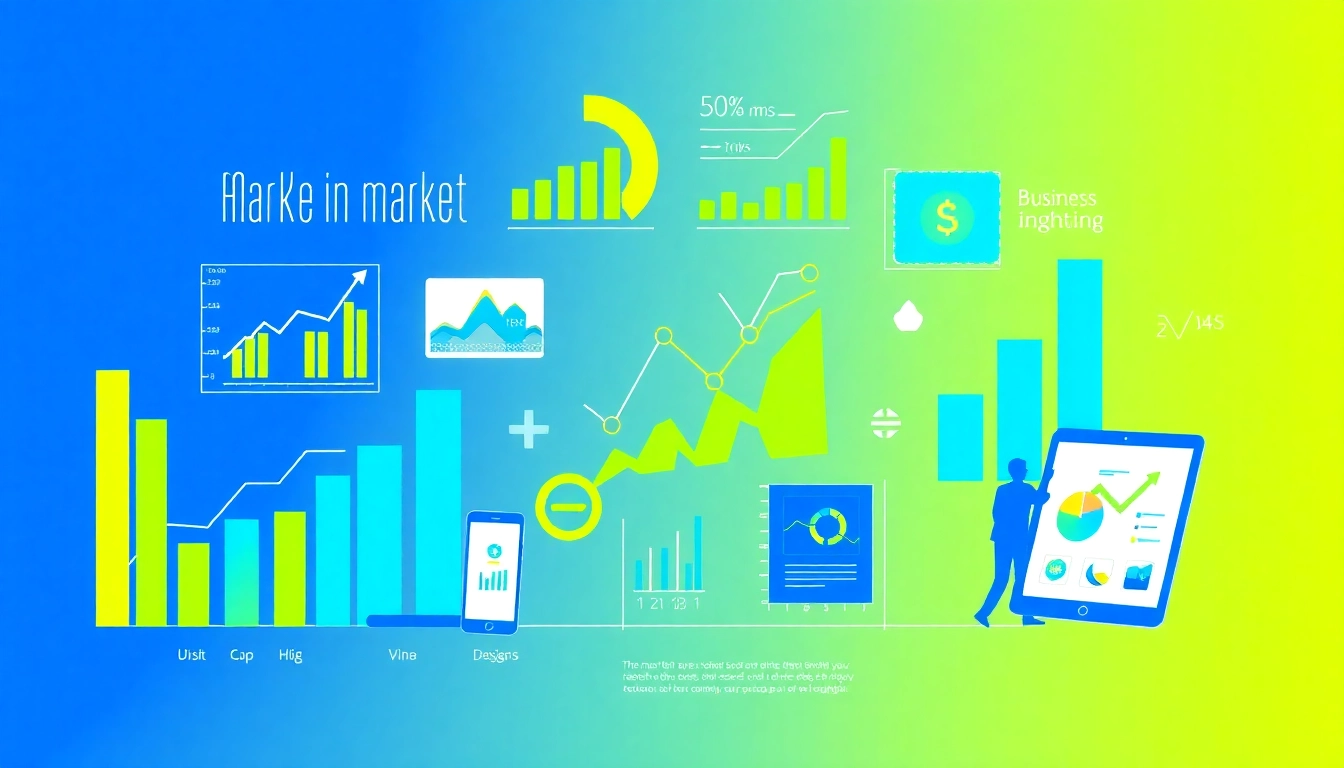Essential Market Insights: Unlocking Trends for Strategic Success

Understanding Market Insights
What Are Market Insights?
Market insights refer to the interpretations and understandings derived from data collected about customers, competitors, and market conditions. They go beyond mere data points to reveal trends, preferences, and behaviors that can significantly shape business strategies. Essentially, they are the actionable outcomes of market research, synthesized in a manner that can facilitate decision-making and future planning.
The Importance of Market Insights in Business
Market insights play a crucial role in helping businesses navigate today’s complicated marketplace. Understanding what drives consumer behavior and market dynamics enables organizations to position themselves advantageously. Effective use of market insights leads to better product development, innovative marketing strategies, enhanced customer satisfaction, and ultimately, greater profitability. By integrating market insights into their operations, companies can identify gaps in the market, tailor their offerings, and respond proactively to changes.
Common Sources of Market Insights
Market insights can be drawn from a variety of sources:
- Surveys and Questionnaires: Gathering direct feedback from consumers about their preferences and experiences.
- Interviews and Focus Groups: Engaging in-depth discussions to uncover deeper insights into consumer behavior.
- Online Analytics: Utilizing web analytics tools to track user behavior and engagement on digital platforms.
- Social Media Listening: Monitoring social platforms to gather insights on public opinion and sentiment relating to products or services.
- Market Reports and Studies: Analyzing reports from market research firms to understand industry trends, forecasts, and key players.
How to Gather Effective Market Insights
User-Centric Research Techniques
Adopting a user-centric approach to research is vital for gathering meaningful market insights. This involves understanding the needs, behaviors, and preferences of customers through methods that prioritize their experience. Techniques include employing customer journey mapping to visualize how consumers interact with a brand, along with empathy interviews that aim to capture emotional responses and attitudes.
Utilizing Data Analytics for Insights
Data analytics is essential for distilling vast amounts of information into actionable insights. Businesses can leverage tools designed for data interpretation, such as Google Analytics, to monitor key performance indicators (KPIs) that affect their goals. Advanced analytics approaches, including predictive analytics, allow companies to forecast trends based on historical data, enabling more informed decision-making.
Engaging with Market Trends through Surveys
Surveys are one of the most effective ways to gather market insights directly from consumers. When designing surveys, it’s important to frame questions that yield qualitative and quantitative insights. Engaging with respondents through personalized surveys increases the likelihood of obtaining deeper insights. Additionally, employing a mix of question types—from rating scales to open-ended questions—encourages richer feedback.
Implementing Market Insights for Growth
Strategic Decision Making with Market Insights
Once gathered, market insights must be integrated into strategic decision-making processes. This involves evaluating the data in the context of the business’s goals and market position. Implementing a data-driven approach means regularly revisiting insights to adapt strategies, ensuring that businesses remain agile and responsive to market conditions. Strategic frameworks like SWOT analysis (Strengths, Weaknesses, Opportunities, Threats) can benefit from the inclusion of documented market insights to assess options objectively.
Aligning Products and Services with Customer Needs
Aligning offerings with customer needs is essential for maintaining relevance in a competitive market. Utilizing insights allows businesses to identify what products or services to enhance, develop, or discontinue based on consumer feedback and preferences. Additionally, market segmentation strategies can provide clarity on which consumer groups will find certain products appealing, allowing for targeted marketing efforts that resonate more deeply.
Case Studies of Successful Market Insight Applications
Numerous organizations have effectively harnessed market insights to drive significant results. For instance, Procter & Gamble utilized consumer research to redefine its product offerings, which resulted in the successful launch of innovative products tailored to specific demographic needs. Similarly, Amazon continuously leverages purchasing data to refine inventory strategies and personalize customer experiences, showcasing how actionable insights can lead to operational excellence and customer loyalty.
Challenges in Analyzing Market Insights
Avoiding Common Pitfalls in Insight Interpretation
Despite the benefits, businesses often encounter pitfalls when interpreting market insights. One major issue is confirmation bias, where organizations favor information that supports their existing beliefs while disregarding contrary data. To combat this, it is critical to approach data evaluation with an open mind and consider alternative perspectives. Collaborative analysis involving cross-functional teams can minimize bias by bringing diverse viewpoints into the decision-making process.
Managing Data Overload and Overanalysis
In the age of big data, companies can easily become overwhelmed by the sheer volume of information available. This data overload can lead to analysis paralysis, impeding decision-making. To avoid this, businesses should prioritize key insights relevant to their objectives and focus on actionable outcomes rather than attempting to analyze every data point. Establishing clear KPIs can aid teams in filtering through data more effectively.
Staying Agile with Market Changes
The market landscape is constantly evolving due to technological advancements and changing consumer behavior. Businesses must stay agile by regularly revisiting and updating their insights. Implementing a continuous feedback loop that incorporates consumer inputs and market analysis into decision-making can help ensure that strategies remain relevant and adaptable to shifts in the ecosystem.
The Future of Market Insights
Emerging Trends in Market Research
As market research continues to evolve, several trends are shaping its future. The integration of omnichannel strategies allows businesses to gather insights across different customer touchpoints, leading to a more comprehensive understanding of consumer journeys. Additionally, incorporating real-time data analytics can enable organizations to respond to market shifts almost instantaneously, a capability increasingly vital in today’s fast-paced environment.
The Role of AI and Automation in Market Insights
Artificial Intelligence (AI) and automation are transforming how businesses analyze market insights. AI tools streamline data processing, enabling quicker and more accurate pattern recognition. Chatbots and virtual assistants are facilitating real-time feedback gathering while machine learning algorithms are enhancing predictive analytics capabilities. This makes identifying trends and consumer preferences more efficient and reliable than ever before.
Predictive Analytics and Forecasting Techniques
Predictive analytics focuses on forecasting future market trends by analyzing historical data. Techniques such as regression analysis and time-series forecasting are integral for businesses looking to anticipate consumer needs, streamline inventory management, and refine marketing campaigns. The ability to forecast changes effectively gives companies a competitive edge, enhancing their strategic positioning in the market.









